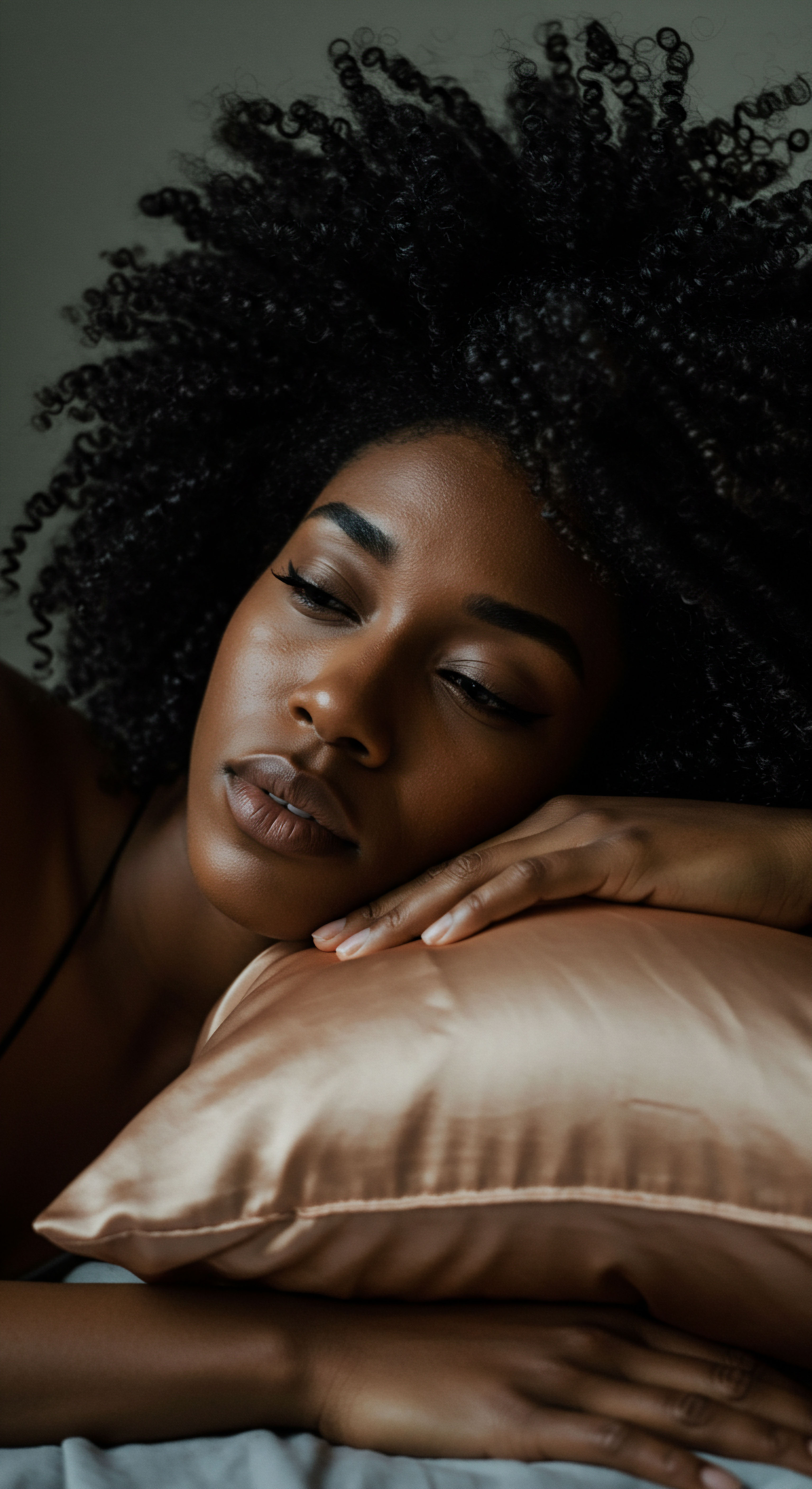
Roots
There exists a silent language within our strands, a whisper of ancestry and resilience held within each curve and coil. To truly comprehend the impact of chemical treatments on hair, one must first listen closely to this fundamental conversation, beginning with the very architecture of a single hair shaft. It is a story not merely of superficial beauty, but of structural integrity and profound vulnerability. We begin at the outermost layer, the hair cuticle, a guardian often taken for granted, yet one that holds the key to hair’s very health and luster.

The Hair’s Outer Shield
The hair cuticle serves as the outermost protective layer of every strand. It comprises multiple layers of flattened, overlapping cells, much like shingles on a roof, which create a formidable barrier around the hair shaft. This arrangement provides mechanical strength and shields the inner cortex from environmental stressors, heat, and chemical agents.
A healthy cuticle appears smooth and shiny, reflecting light beautifully, and it helps to seal in the hair’s natural moisture. When this protective layer is compromised, the hair’s ability to retain moisture diminishes, leading to a dull, rough appearance.

What Constitutes This Protective Layer?
The cells forming the hair cuticle are composed of Keratin Proteins. These proteins contain a high concentration of sulfur, particularly from the amino acid cystine. The stability and physical toughness of the cuticle cells are partly accounted for by the high content of disulfide crosslinking within these proteins. The outermost part of the cuticle, known as the epicuticle, also includes lipids, such as 18-methyleicosanoic acid (18-MEA), which give the hair surface its hydrophobic properties, making it naturally water-repellent and providing lubricity.
The hair cuticle, a layered shield of keratinized cells, guards the inner hair structure and dictates its outward appearance and moisture retention.
The intricate arrangement of these layers, along with the specific protein and lipid composition, determines how well the hair withstands external forces and chemical interventions. Any alteration to this delicate balance can have widespread effects on the entire hair fiber. Understanding this foundational structure allows us to appreciate the delicate dance that occurs when chemical treatments enter the picture, seeking to alter hair’s very nature.
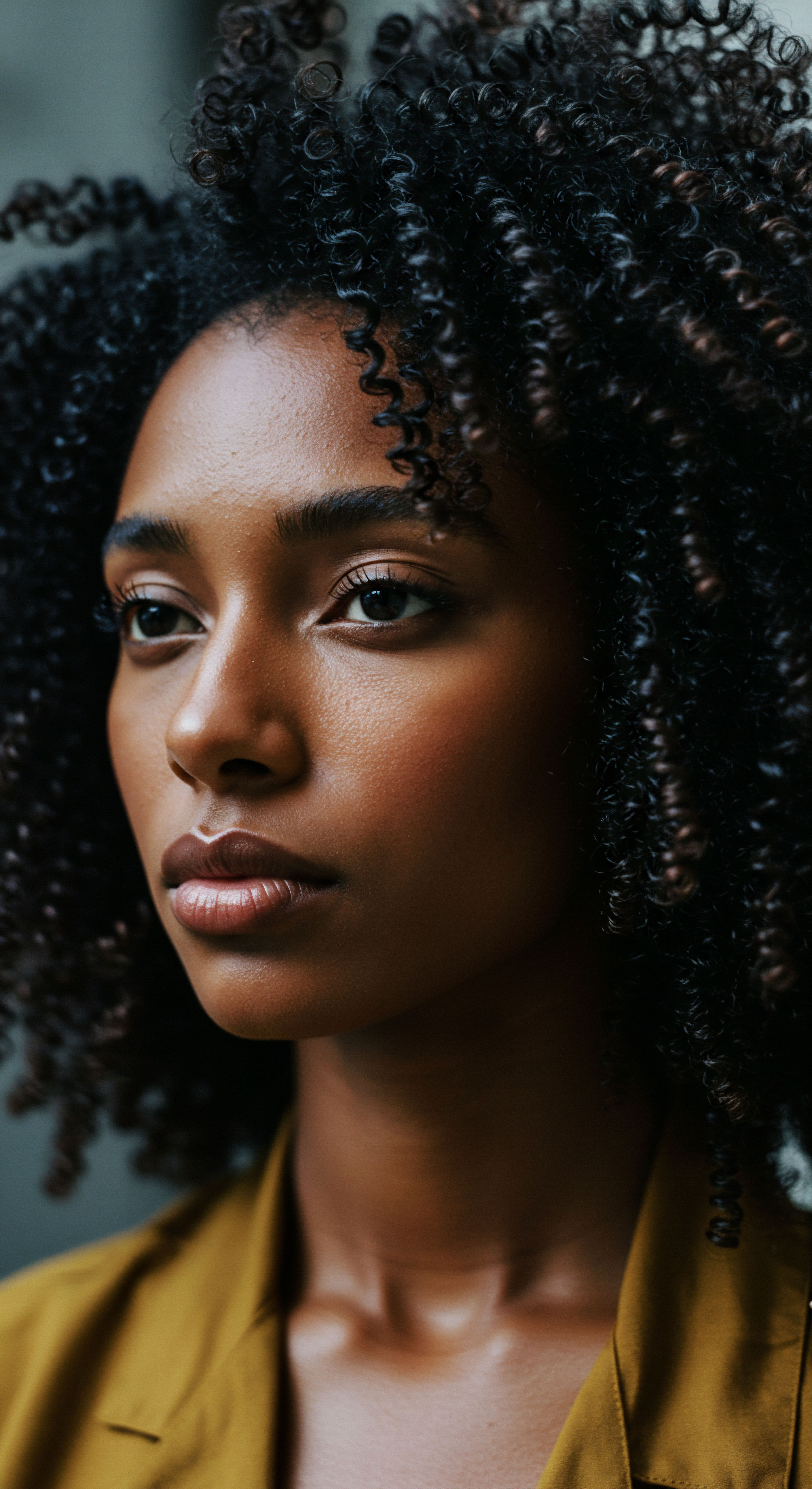
Ritual
The pursuit of altered hair textures and hues has long been a part of human expression, a ceremonial act that transforms appearance. Yet, behind the desire for straight strands, vibrant color, or bouncy curls lies a precise chemical dialogue with the hair’s structure. When we engage in these styling rituals, we initiate a series of reactions that directly impact the hair cuticle, altering its very being to achieve the desired effect. The consequences of these chemical conversations range from subtle shifts to profound reconfigurations of the hair’s outer defense.

How Do Chemical Straighteners Interact with the Cuticle?
Chemical relaxers, designed to straighten textured hair, typically employ highly alkaline agents, such as sodium hydroxide (lye) or guanidine carbonate (no-lye formulations). These powerful substances operate by significantly raising the hair’s pH, causing the cuticle scales to swell and lift. This opening of the cuticle is a necessary step, allowing the active chemicals to penetrate deeper into the hair’s cortex, where the disulfide bonds responsible for the hair’s natural curl pattern reside. Once inside, these agents break down the disulfide bonds, permanently altering the hair’s internal structure.
The very act of lifting the cuticle, while essential for the straightening process, inherently compromises its integrity. This can leave the cuticle rough, uneven, and less able to lay flat, contributing to increased porosity and vulnerability. Repeated application can lead to a chronically open cuticle, making the hair more susceptible to moisture loss and external damage.

What Happens to the Cuticle During Coloring and Bleaching?
Hair coloring and bleaching procedures also depend on opening the hair cuticle to deposit or remove pigment. Permanent hair dyes contain alkaline agents, often ammonia or its substitutes, and an oxidizing agent, typically hydrogen peroxide. The alkaline component elevates the hair’s pH, causing the cuticle scales to swell and separate.
This allows the dye molecules, initially small, to enter the cortex. Once inside, these molecules oxidize and expand, becoming too large to easily exit, thus locking in the new color.
Bleaching, a more aggressive process, uses stronger oxidizing agents like hydrogen peroxide, often combined with persulfates. These chemicals not only open the cuticle but also actively break down melanin pigments within the cortex. This oxidative process is not selective; it can also degrade the keratin proteins within the cuticle and cortex, leading to significant structural damage.
The transformation sought through chemical treatments begins with a direct engagement with the hair cuticle, requiring its deliberate opening to alter the hair’s internal architecture.
The extent of cuticle lifting and damage during coloring and bleaching is directly related to the strength of the chemicals used and the processing time. Higher concentrations of hydrogen peroxide, for example, can burn holes in the cuticle, leading to irreversible damage.
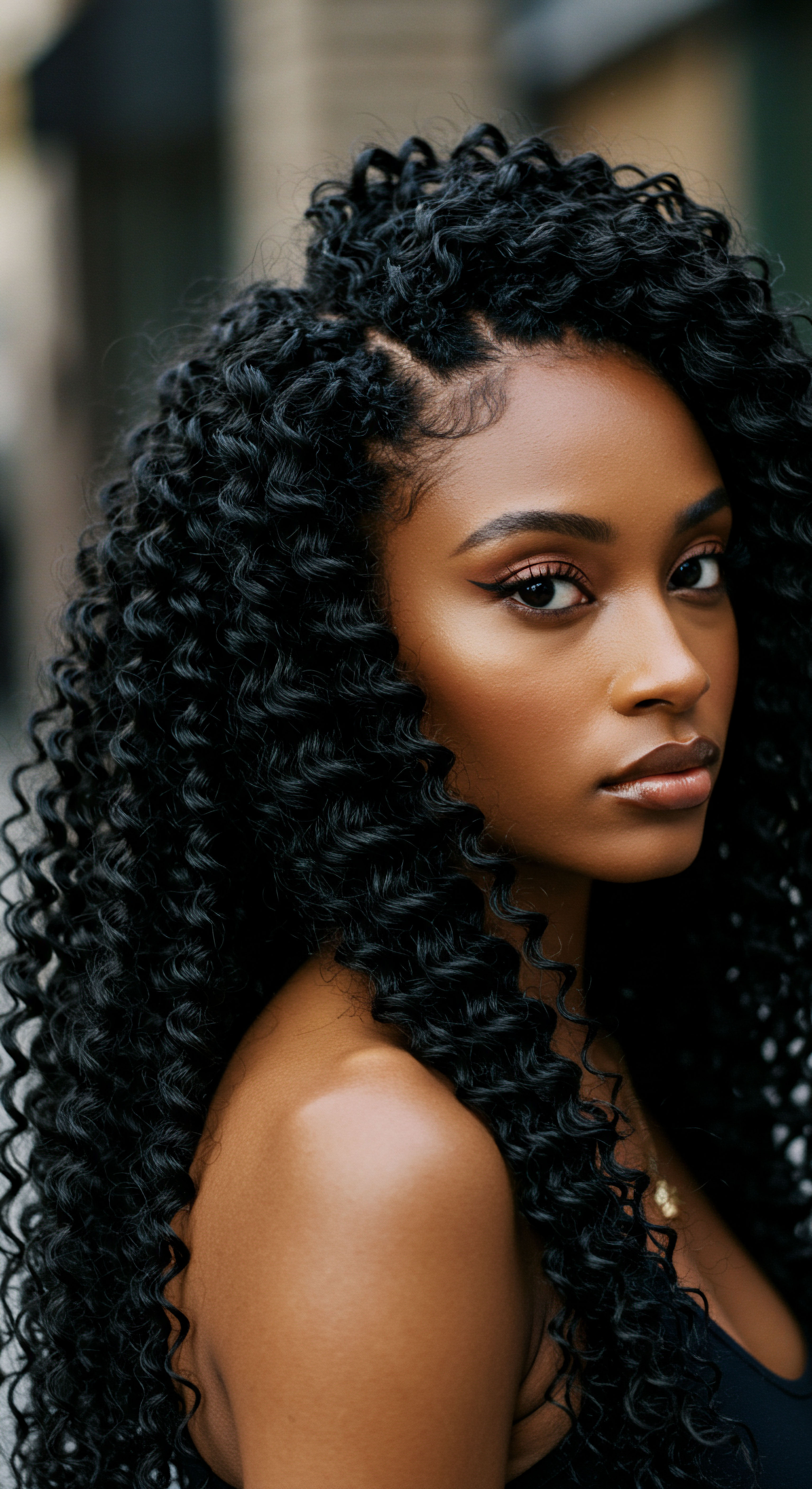
How Do Permanent Waves Reshape the Cuticle?
Permanent waving, or perming, also relies on chemical alteration to create lasting curls or waves. The process involves two main steps ❉ a reduction phase and an oxidation phase. In the reduction phase, a reducing agent (often thioglycolate) is applied, which causes the hair to swell and the cuticle to lift, permitting the solution to reach the cortex. Here, it breaks the disulfide bonds.
The hair is then wrapped around rods to set the new shape. In the oxidation phase, a neutralizing agent (often hydrogen peroxide) reforms the disulfide bonds in their new, curled configuration.
While the primary chemical changes for permanent waving occur within the cortex, the cuticle’s role in allowing penetration is critical. The swelling and lifting of the cuticle during the alkaline reduction phase can still cause structural strain. Studies using electron microscopy on permanent waved hair have sometimes shown cuticle damage, though the most pronounced changes in protein structure often occur in the cortex.
| Treatment Type Chemical Relaxers |
| Primary Cuticle Action Alkaline swelling and lifting |
| Common Cuticle Outcome Compromised integrity, roughness, increased porosity |
| Treatment Type Hair Dyes (Permanent) |
| Primary Cuticle Action Alkaline swelling and lifting for penetration |
| Common Cuticle Outcome Lifting, potential for uneven surface |
| Treatment Type Bleaching |
| Primary Cuticle Action Oxidative lifting, degradation of proteins |
| Common Cuticle Outcome Significant damage, holes, detachment, increased porosity |
| Treatment Type Permanent Waves |
| Primary Cuticle Action Alkaline swelling and lifting for penetration |
| Common Cuticle Outcome Structural strain, potential for damage |
| Treatment Type Understanding these immediate impacts guides more protective hair care practices. |
Each of these chemical rituals, while serving distinct purposes, shares a common initial interaction with the hair cuticle ❉ a deliberate opening to reach the inner layers. This initial step, while necessary for the desired transformation, is also the genesis of potential damage to the hair’s outermost shield.

Relay
The effects of chemical treatments on the hair cuticle do not conclude with the immediate application; rather, they initiate a complex relay of consequences that unfold over time, influencing hair health and appearance long after the salon visit. This ongoing interaction between altered cuticle structure and daily life paints a nuanced picture of hair’s resilience and its limits. To truly grasp this interplay, we must look beyond the surface and consider the long-term biological, physical, and even cultural reverberations.

Long-Term Consequences of Cuticle Alteration
Repeated chemical treatments can lead to chronic cuticle damage, manifesting as increased hair porosity, dryness, frizz, and susceptibility to breakage. When the cuticle scales are persistently lifted or eroded, the hair loses its ability to regulate moisture effectively. Water enters and exits rapidly, leading to a constant state of dehydration and making the hair feel rough and brittle. This heightened porosity also means that beneficial conditioning agents may not remain within the hair for long, further compounding the dryness.
The physical changes observed in chemically treated hair, such as a rougher surface and fragmented cuticle cells, are visible under electron microscopy. In severe instances, complete cuticle loss can occur, exposing the underlying cortex, which is far more vulnerable to environmental and mechanical damage.
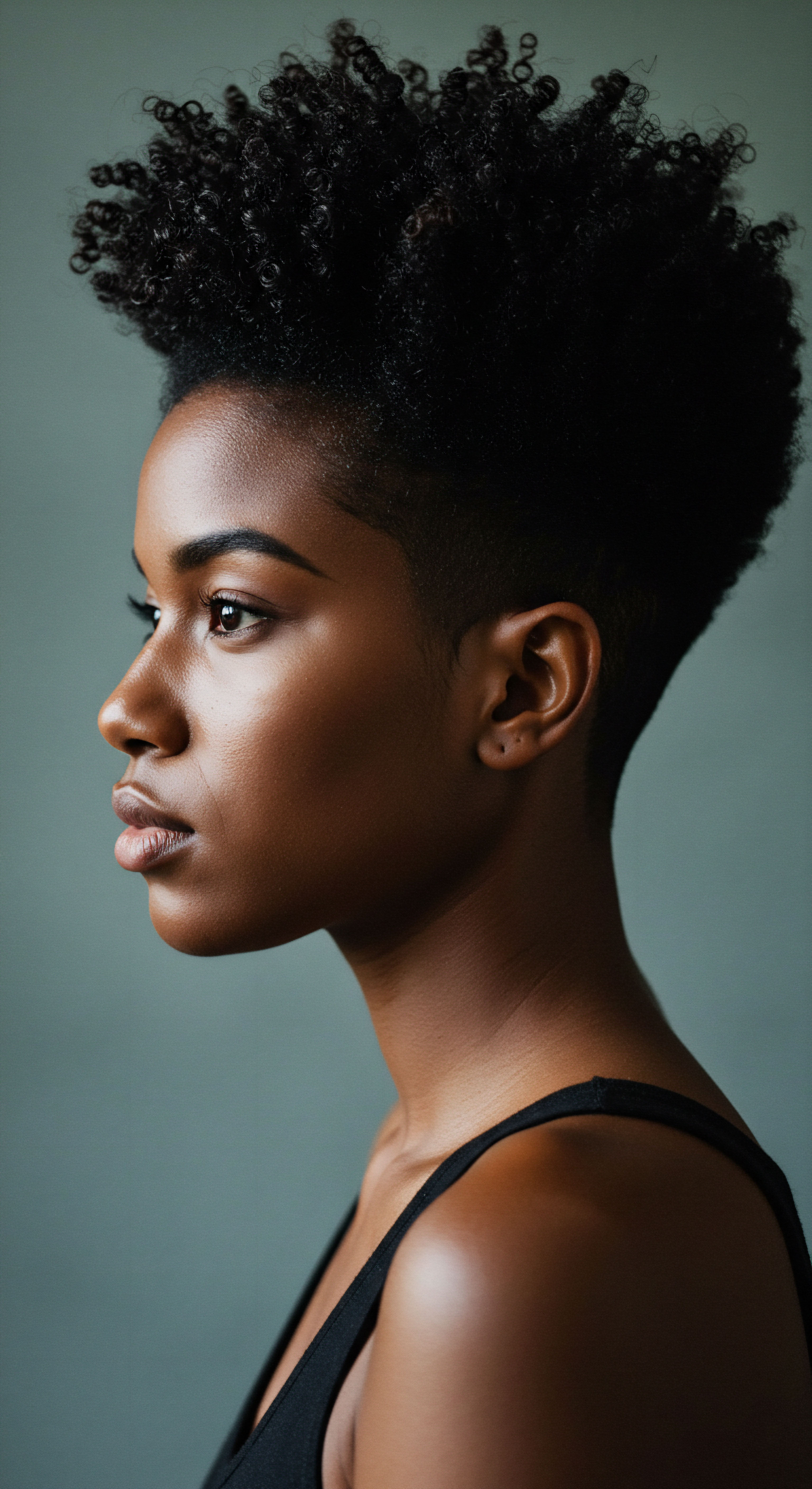
A Look at Textured Hair and Chemical Alterations
Textured hair, with its unique structural characteristics, can respond distinctly to chemical treatments. African hair, for example, often exhibits an elliptic cross-section and varying diameter along the strand, which can make it more susceptible to breakage. Chemical relaxers, widely used to straighten textured hair, are particularly aggressive.
They infiltrate the outer protective cuticle and break bonds in the cortex, permanently altering the curl pattern. This process leaves the hair weak, brittle, and prone to breakage.
A study exploring the impact of chemical relaxers on African-American hair utilized microfluorometric techniques and scanning electron microscopy (SEM) to quantify changes in the hair surface. The findings indicated a clear difference in damage between lab-made relaxer solutions and commercial systems, revealing relaxer-induced changes in hair topography and an increased level of delipidation and acidification of the hair surface. This underscores that while straightening is achieved, it comes at a significant structural cost to the hair’s protective outer layer.

Can Hair Recover from Chemical Damage?
The question of recovery for chemically damaged hair is complex. While some temporary improvements can be made through targeted conditioning and protein treatments that help to temporarily fill gaps and smooth the cuticle, the effects of severe chemical alteration can be irreversible. For instance, if the cuticle is extensively damaged or entirely lost, its natural protective function cannot be fully restored.
One research paper highlighted that “repeated chemical processing causes hair to lose 50 percent of its strength.” This statistic, a sobering indicator, underscores the significant, lasting impact of chemical treatments on hair’s fundamental integrity, particularly its ability to withstand stress and maintain its natural resilience. Such a reduction in strength is not merely a cosmetic concern; it speaks to a profound structural compromise at the microscopic level.
The science points to the importance of understanding the limitations of chemical interventions. While products can temporarily improve the appearance and feel of damaged hair, they cannot reverse fundamental changes to the cuticle’s cellular structure or the internal protein bonds. The goal shifts from complete reversal to careful management, protection of new growth, and supportive care for the compromised lengths. This requires a shift in mindset, moving beyond immediate aesthetic gratification to a long-term commitment to hair wellness.
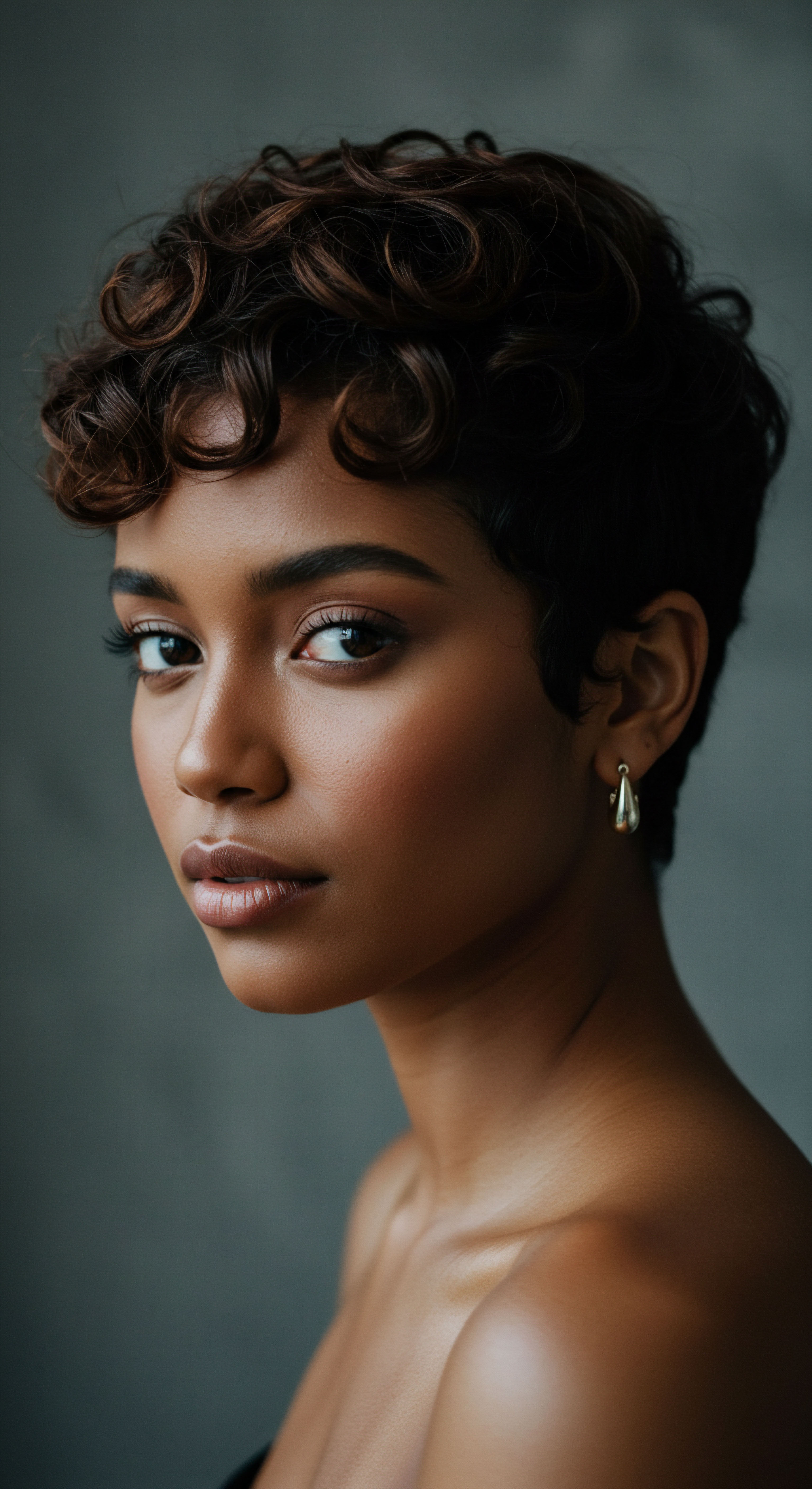
The Interplay of Damage and Care
The relay of chemical damage also includes how hair interacts with subsequent treatments and daily care. Damaged, porous hair absorbs chemical products more quickly and unevenly, which can lead to unpredictable results with coloring or further treatments. This heightened porosity also makes hair more vulnerable to other stressors, such as heat styling and environmental exposure.
A holistic approach to care becomes paramount. This involves not only selecting appropriate products but also adjusting styling habits and being mindful of the cumulative effect of various stressors. The conversation about chemical treatments extends beyond the salon chair, becoming a continuous dialogue between the individual and their hair’s altered state.
- Protein Treatments ❉ Temporarily fill gaps and holes in damaged cuticles, strengthening hair and reducing breakage.
- Deep Conditioners ❉ Penetrate the hair shaft, moisturizing and smoothing the cuticle, replenishing lost moisture.
- Cool Water Rinses ❉ Help to close the cuticle, sealing in nutrients and moisture.

Reflection
To contemplate the hair cuticle is to ponder a delicate, yet resilient, shield. Our exploration of chemical treatments reveals not merely a scientific process, but a profound conversation with the very essence of our hair. Each alteration, whether for straightening or coloring, begins with an invitation to the cuticle to open, a necessary yielding that carries lasting consequences.
This journey through the hair’s architecture and its chemical encounters asks us to reconsider our relationship with our strands, viewing them not as static canvases, but as living extensions of our history and choices. The beauty we seek can be a conscious collaboration with our hair’s inherent nature, a dance between aspiration and preservation, ensuring that the stories our hair tells are ones of both transformation and enduring strength.

References
- Bolduc, C. & Shapiro, J. (2001). Hair care products ❉ Waving, straightening, conditioning, and coloring. Clinics in Dermatology, 19(4), 431-438.
- Robles Velasco, M. V. de Sá Dias, T. C. Zanardi de Freitas, A. Dias Vieira Júnior, N. Sales de Oliveira Pinto, C. A. Kaneko, T. M. & Baby, A. R. (2014). Hair fiber characteristics and methods to evaluate hair physical and mechanical properties. Brazilian Journal of Pharmaceutical Sciences, 50(4), 665-676.
- Giacomoni, S. & Portolan, F. (2009). Permanent hair waving. Journal of Cosmetic Science, 60(6), 619-634.
- Lee, Y. & Choi, S. (2012). Hair damage and wave efficiency according to the degree of alkalinity in permanent wave. Journal of the Korean Society of Cosmetology, 18(3), 575-581.
- Sanad, R. A. El-Feky, M. A. & Abdel-Wahab, H. M. (2019). Hair shaft after application of chemical hair relaxers ❉ Clinical and histopathological study. Journal of Cosmetic Dermatology, 18(3), 929-935.
- Serrano, L. A. & de Paula, R. C. (2017). Keratin-based peptide ❉ biological evaluation and strengthening properties on relaxed hair. Journal of Cosmetic Science, 68(1), 101-112.
- Okumura, K. Morita, M. & Imokawa, G. (2016). A highly resistant structure between cuticle and cortex of human hair. International Journal of Cosmetic Science, 38(5), 456-462.
- Robbins, C. R. (2012). Chemical and physical behavior of human hair. Springer Science & Business Media.
- Bhushan, B. (Ed.). (2010). Biophysics of the hair. Springer Science & Business Media.
- Khazaka, D. & Loussouarn, G. (2019). Chemical and physical treatments damage Caucasian and Afro-ethnic hair fiber ❉ analytical and image assays. Journal of the European Academy of Dermatology and Venereology, 33(9), 1641-1647.
- Sakamoto, H. & Imokawa, G. (2010). Mechanism of permanent hair dyeing. Journal of Cosmetic Science, 61(1), 59-71.
- Wagner, M. & Schlenk, D. (2014). Hair dyes and their mechanisms of action. Cosmetic Science and Technology, 1-19.
- Yamauchi, M. & Yamauchi, K. (2009). The physical and chemical disruption of human hair after bleaching – studies by transmission electron microscopy and redox proteomics. Journal of Cosmetic Science, 60(5), 519-530.
- Randall, V. A. (2008). Hair and its disorders ❉ Biology, pathology and management. CRC Press.
- McMichael, A. J. & Parks-Miller, A. (2014). A review of hair care products for Black individuals. Cutis, 93(6), 291-295.